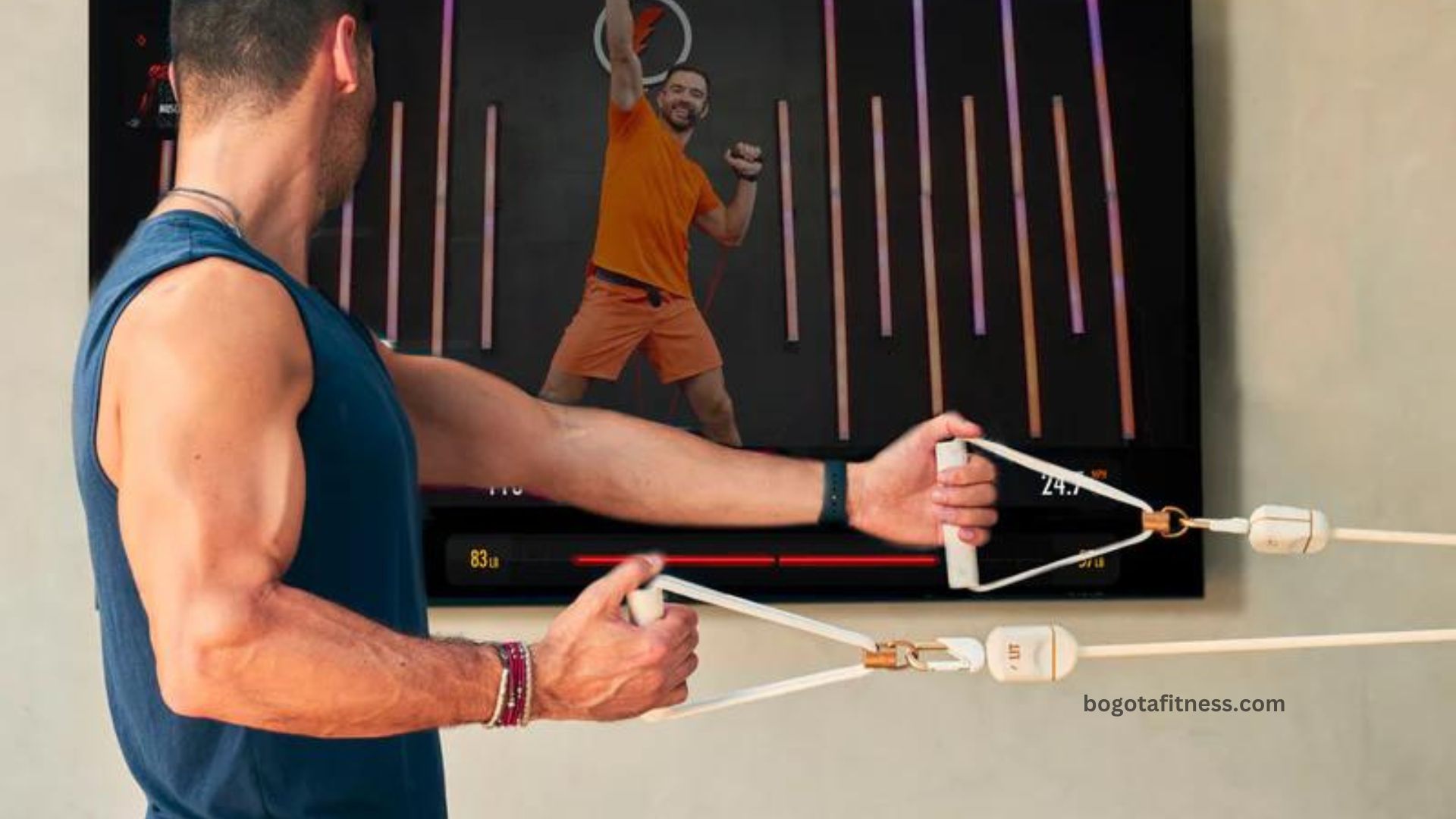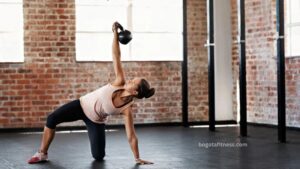Compared to free weights, resistance bands are far more versatile. Any kind of exercise, including strength training, Pilates, cardio, core, and more, may be done using resistance bands.
So why do most individuals fail to recognize the value of resistance bands as a tool for exercise?
Resistance bands are thought to be limited to a few activities and minimal resistance, in contrast to other simple home workout equipment like stair climbers, treadmills, spin bikes, and jump ropes. In actuality, this is untrue.
We have put together this guide on how to use resistance bands correctly to optimize the effectiveness of your workouts because of their adaptability and variants.
Choosing resistance bands
Throughout your workout, you may fully engage your muscles with the resistance bands’ changing resistance.
A heavier resistance is equivalent to a thicker resistance band. Variable resistance, or the ability to have multiple precise weights within the band, is what makes resistance bands special. This implies that the weight increases with the distance from the band.
How to choose resistance band weight?
In order to become acclimated to the resistance and develop strength, we advise novices to begin with a resistance band that is lighter—between 10 and 15 pounds. However, you can increase the resistance to 30 pounds or more if you are experienced with strength training to make your workout more intense.
How to use resistance bands?
Try doing a variety of exercises with the resistance band to see which one you can complete the entire workout with in order to learn how to utilize them and which resistance is best for you. When doing a bicep curl, for instance, you should be able to fully contract your arm and maintain it in place. The band is too heavy for you if you are having trouble controlling the resistance and your arm is pulling back.
You can begin with ten repetitions when you’ve determined the right resistance. You can up the rep count to 15 as your strength increases. Similar to this, exercise repetitions advance to the next resistance level gradually as they get easier to perform. It would be beneficial to keep in mind that because the leg and glute muscles are stronger and more pronounced than the upper muscles, your lower body would build strength more quickly than the upper body.
Here’s how to use resistance bands properly at home to increase muscle mass and strength. There are various exercises you can pick from, depending on your fitness objectives.
Six resistance band exercises for a full-body workout
1. Opposition jacks
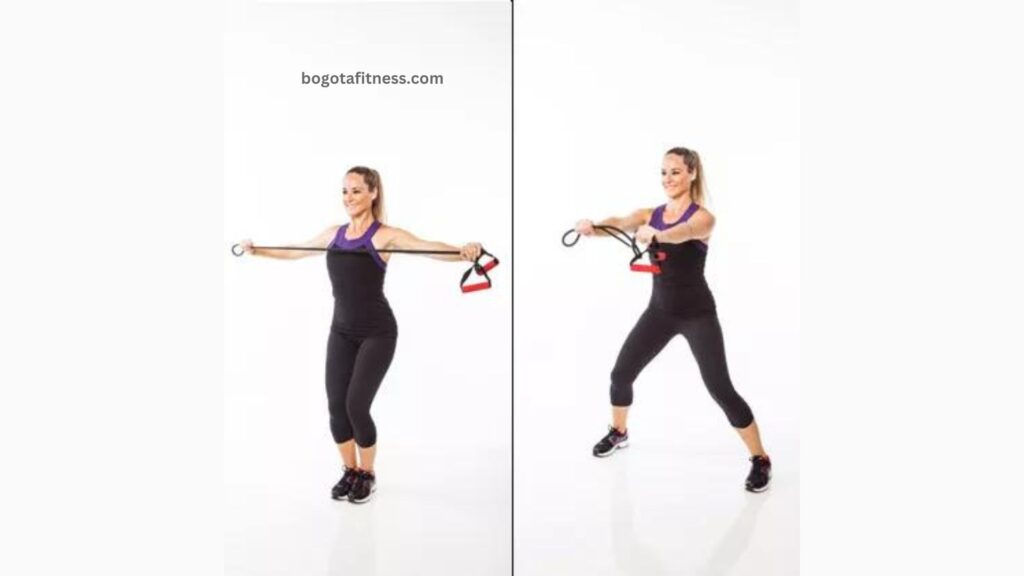
Keep your feet together and hold onto the resistance band that has been folded. Reach out to the sides and pull the resistance band as widely apart as you can. As you pull the band closer your chest, tense your shoulder blades together. It’s a great way to strengthen your chest.
2. Resisted boxer

Hold the band firmly in place and face away from it to target your biceps. stomp forward with your right foot and extend your left arm out, simulating a forward punch, being careful not to stomp on the handles or bend your elbows by the sides.
3. Press back
Hold the handles with your arms out to the sides while facing the anchor while standing with your feet apart. With your hands facing back, lower yourself into a deep squat and press your arms back by your hips. This will strengthen your back muscles.
Also Read: 12 EQUIPMENT ESSENTIALS YOU NEED TO BUILD A HOME GYM
4. Resistance band deadlift

You can use resistance bands to accomplish the deadlift. Place your feet hip-width apart and stand on the band that has been knotted into a loop. With both hands, hold onto the opposite side of the loop, and flex your knees slightly to bring your torso nearly parallel to the ground. Maintain a straight back and a taut abdominal region. During this exercise, it would be beneficial if your hamstrings felt a little stretched.
5. Squat
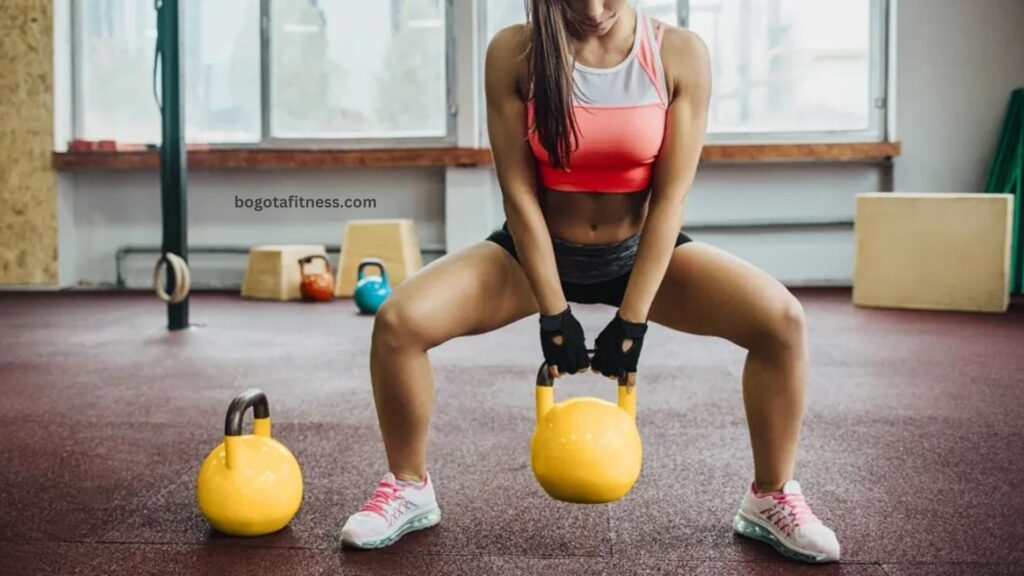
Hold the opposite end of the band with your hand, elbow bent, and palm facing your front shoulder while standing on the band with your feet hip-width apart. Lower yourself into a squat position by bending your knees, pivot your hips, and engage your core. You need to perform 10 to 15 repetitions of this full-body exercise with adequate resistance.
6. Resistance row
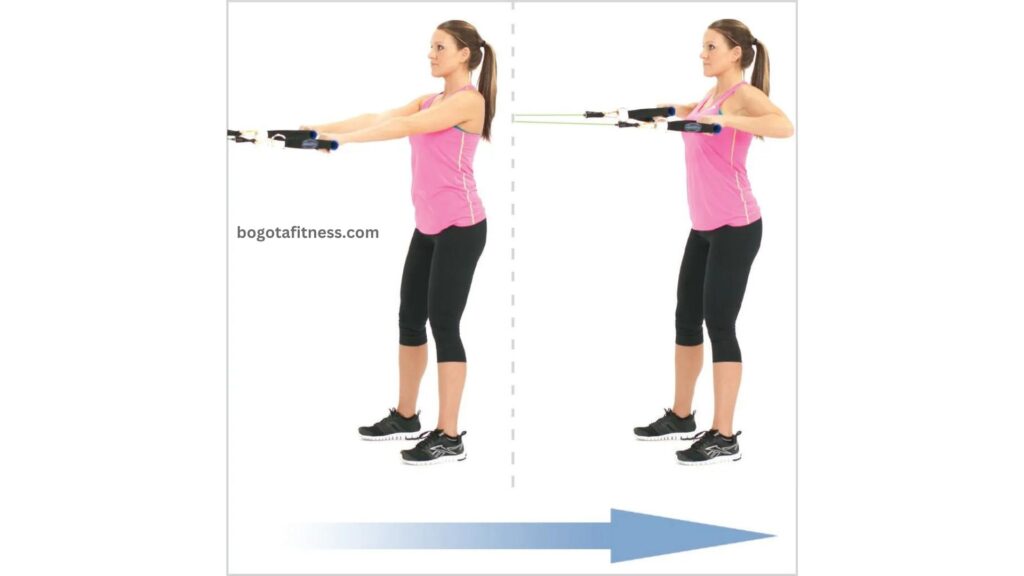
Position yourself in the middle of the resistance band and form an X with the band’s ends crossed. Grip the band or handle at either end while extending your upper body forward. Squeeze your shoulder blades together by pulling your elbows out and back while maintaining a low, together hand position.
How To Choose Resistance Bands Based on Exercise Type
It’s crucial to select a resistance band according to the kinds of activities you do in addition to learning how to utilize them. The varieties of resistance bands available are listed below.
1. Loop resistance bands
Power bands are another name for loop resistance bands. These bands have a resistance that ranges from 5 pounds to 175 pounds, and they are constructed from a single, looped piece of lightweight rubber latex. Loop bands are excellent for physical treatment, bodybuilding, and enhancing athletic performance. The little form of these bands fits snugly in the calves, ankles, thighs, and knees, making them ideal for targeting the minor muscle groups in these regions. These miniature models have resistance strengths between five and fifty pounds.
2. Tube resistance bands

The most popular kind of resistance bands is the tube variety, which is composed of stronger rubber and has handles on both ends. Because they provide you more control over the workouts, they are best suited for novices. The grips improve grip, make it simple to control the movement of the band, and can withstand resistance loads of up to 180 pounds.
3. Therapy bands
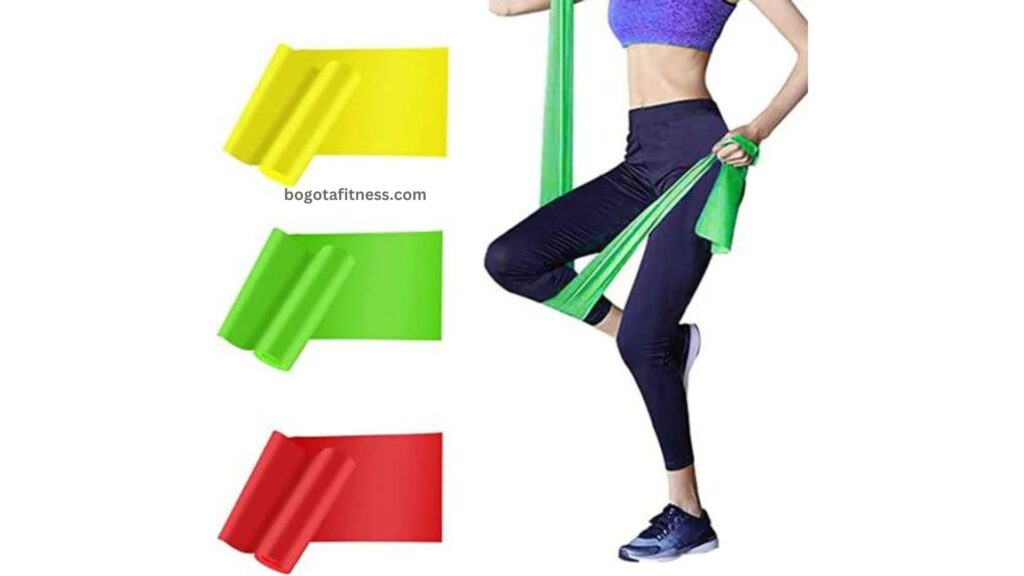
Similar to loop bands, but often thinner and non-looping, are therapy-resistant bands. Though you can use them for fitness as well, they are primarily employed in physical therapy for mobility. For example, therapeutic bands can be utilized in shoulder rehabilitation and pre-hab to improve the rotor cuff muscles’ stabilization.
4. LIT Axis smart resistance band
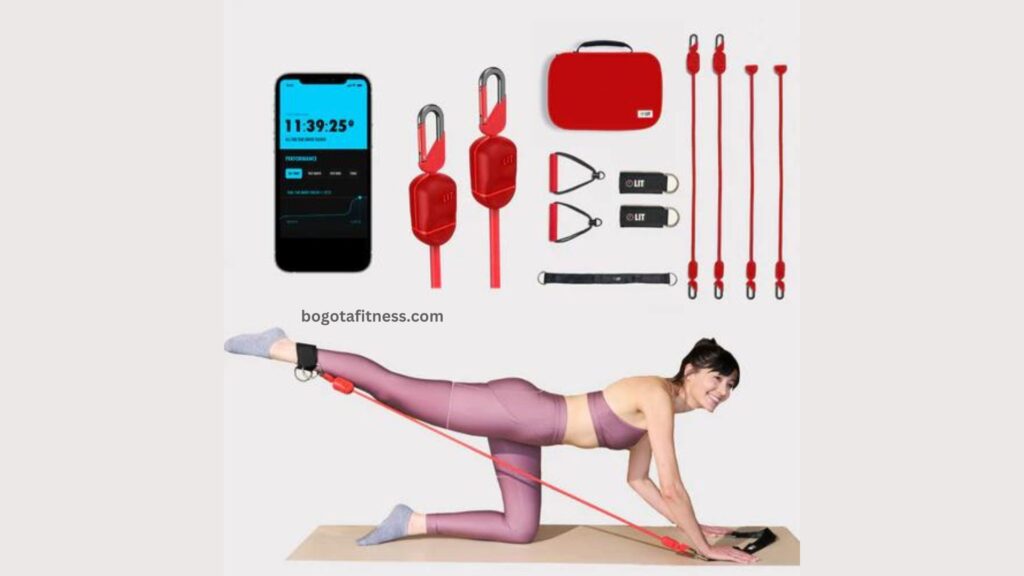
The conventional resistance band is enhanced by the LIT Axis smart resistance band. It is combined with technology to make the smallest smart gym in the world.
Since LIT Axis doesn’t need a cord, you can turn any available area into a home workout center. It provides on-screen measurements, including as repetitions, resistance loads, duration under strain, and muscle imbalance detection, by connecting to the LIT App on your phone.
With the help of this resistance band, you can incorporate cardio, Pilates, strength training, recovery, and any other kind of exercise into your routine, taking it to the next level.
Benefits of using resistance bands
- Give benefits similar to free weights: You can achieve comparable results with resistance bands since they offer a comparable level of resistance to free weights.
- Works on both concentric and eccentric motion: The bands provide a more thorough form of workout for your muscles by making you work harder both when your muscles shorten and lengthen.
- Work muscles in both directions: Exercise your muscles in both directions with resistance bands, something you cannot accomplish with free weights.
- Keep muscles under tension for a longer time: As you go through the entire range of motion, the bands maintain your muscles taut longer, which improves muscle function and strength.
- Improve overall function and strength of muscles: Exercises with resistance bands enhance the general strength and function of your muscles.
- Increase caloric burn: Exercises with resistance bands can speed your metabolism and result in a greater calorie burn.
- Can make an exercise easier or harder: You may adjust the degree of difficulty in an exercise by using resistance bands.
- Fix your motion and posture: Beginners can achieve improved exercise form by refining their motion and posture with the use of resistance bands.
- Correct your hip-hinge mechanism: The precise hip-hinge mechanism needed for pull-ups and deadlifts can be taught with resistance bands.
- Master your technique of bodyweight exercises: You may improve your technique for bodyweight workouts like pull-ups and chin-ups by using resistance bands.
- Master your technique of bodyweight exercises: With a broad range of motion, bands help you build strength and promote optimal muscle recruitment and squeezing during training. You can gradually reduce the band’s help as the movement becomes easier to manage until you are able to complete the exercise on your own.

